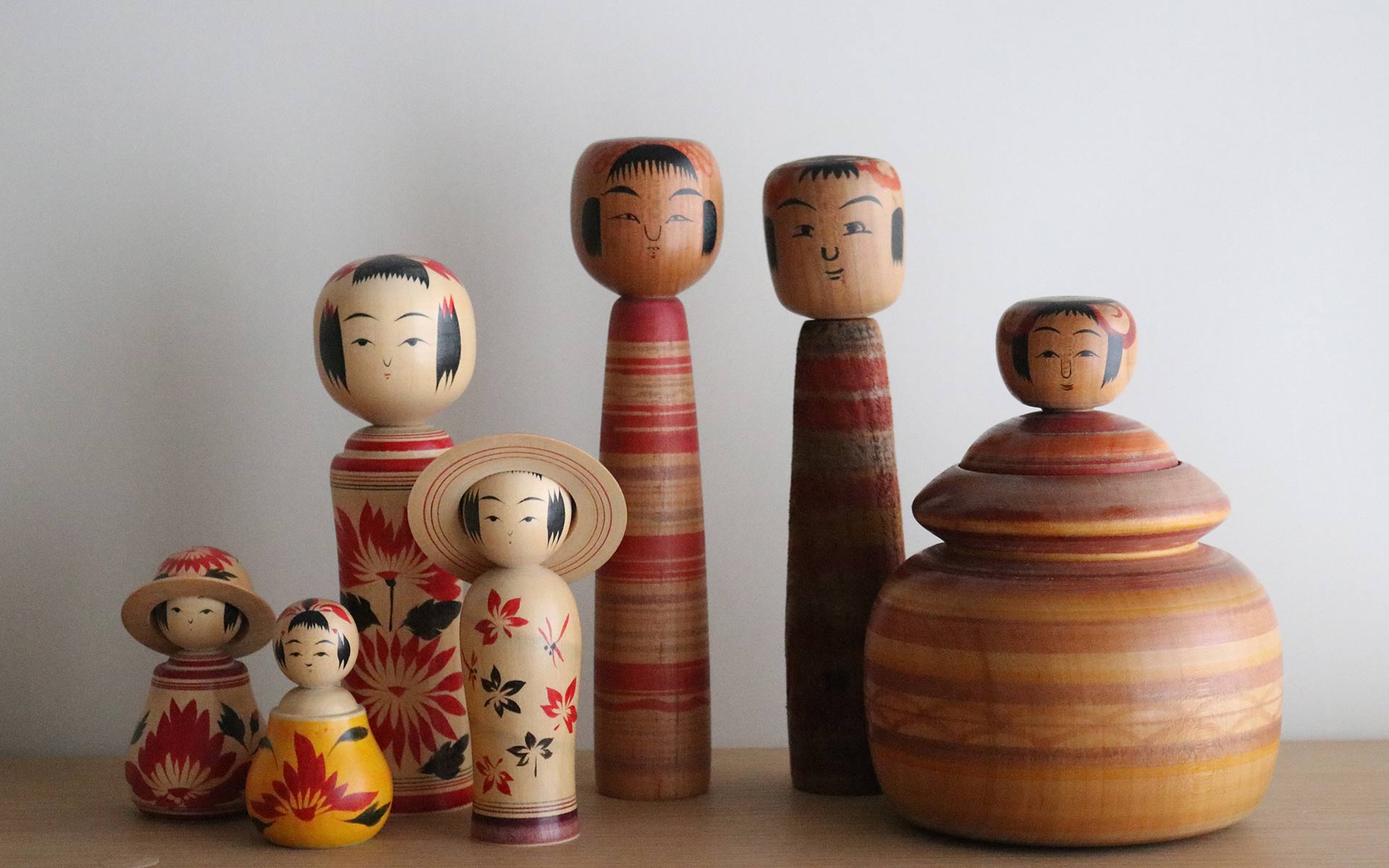
The origins of wooden kokeshi dolls, the iconic Japanese folk toy, are often debated. Some believe that they emerged during the Edo period (1600-1688), while others say that they arose in the 1800s. We do know, however, that they originate from the Tōhoku region of northeast of Japan, where they’re hand-carved by kokeshi masters using dogwood, cherry wood and sometimes Japanese maple wood.
While these days the enduring image of a kokeshi doll is beautifully painted kimono patterns and facial expressions, they originally started out as simpler, plain figures. And, although they're now instantly recognisable as a creative ornament or souvenir in Japan, kokeshi dolls were traditionally given as gifts to celebrate the birth of a child.
Fun fact – kokeshi dolls may all look similar at first glance, but there are 12 styles of doll across Tohoku’s six prefectures, with different shapes and features.
